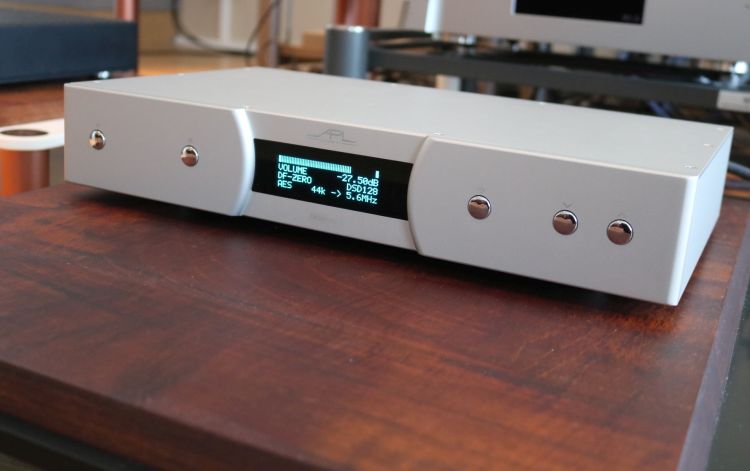
Review samples supplied by Colab
Retail price in the Benelux (including 21% VAT): 6.990 euro
I’ve heard DACs in all shapes and sizes and in all the different price classes. In general, very affordable products do not outperform state of the art DACs in the “cost no objective” category. However, it is also certainly not true that more expensive products always beat less expensive products. And, recently, I see more and more evidence that truly exceptional DACs need not cost an arm and a leg anymore, well, maybe a finger or two. As regular readers will know, I consider the CH Precision C1 DAC to be the best I have heard and that’s why it is my reference DAC. But this one is firmly in the arm+leg+another limb category. Of the ones that were less hideously expensive than the C1, the Aqua Formula xHD with the V2 output board is still the best I have heard and it is placed second on my DAC ranking order. But at almost 14K, it is still very seriously priced, certainly warranting a couple of fingers, I’d say. Then, there have been a couple of DACs at what I call the affordable end of the spectrum (under 2K) such as the Audio-GD R8 DAC, Jay’s Audio DAC2 Signature and Denafrips Venus, that have really surprised me by performing on the same level of the Aqua in one or more parameters. Some of these have equaled or even bettered it in some aspects but none have wholly surpassed it.
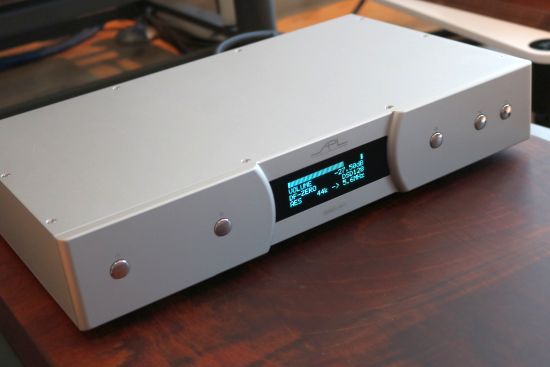
And now, here is the APL DSD-AR DAC, “sold” to me by Pierre Costers of Colab in Belgium as follows: “We have DACs from 100€ till 150.000€ here but today, a bomb arrived. The price tag is 6990€. Believe me or not, this DAC makes me forget about the turntable! The sound is so amazing!” No doubt being familiar with the critic in me, he concluded with: “Ok, blabla is blabla, you really need to listen to this UFO”:-)”
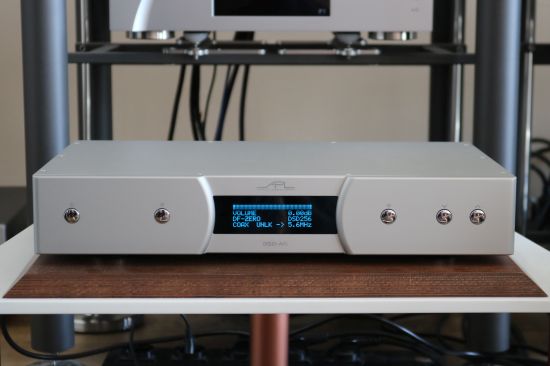
A little under 7K is still not pocket change but neither would I say one needs to submit any limbs, or parts thereof, to be able to afford it. But would it truly be as magnificent as Pierre makes it out to be? Having known him and Francois for some time now, I have always found that they know what they are talking about, and while they are both very witty and perhaps a little eccentric, they do not speak nonsense. So, making one forget about the turntable? Really? My next stop was the APL website where it could be read that their DACs are “Inspired by reference vinyl sound quality”. This made me think. What if, by aiming to have digital components sound vinyl-like, they reproduce mostly Vinyl’s downsides? The stereotypical positive properties would be warmth, lushness, etcetera. But translated to digital that can turn into a slow, clogged, loose sound that lacks transient sharpness and sounds nothing like true vinyl done right. But now I had to know! So, I accepted Pierre’s request to review this UFO, I mean DAC.
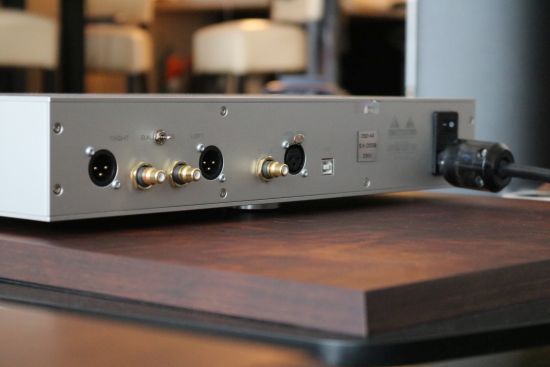
Technical
I’m trying this new thing where I don’t spend quite as much time describing the technical matters as it has come to my attention from several sources that this section is frequently skipped and all of it can be found on the manufacturer’s website anyway. But don’t hesitate to let me know in the comments if you feel that more technical info is required.
Refreshingly, APL is not made in the USA, UK, Germany, Japan, China or any of the usual “audio” countries but in Bulgaria.
The product page on the APL website states that the DSD-AR is a pure DSD, Reference all-solid-state Digital to Analog converter with a transformer-coupled Class-A output stage. Pure DSD, you ask? The manual confirms that the DSD-AR upsamples everything to DSD meaning that the conversion can be done very efficiently. The DAC accepts all the popular bit- and sample rates in PCM and DSD.
There is a beautiful blue-green OLED display that offers a wealth of information and its volume level indicator is large enough for me to decipher even from 6 meters away. I can’t read any of the text below but that goes for pretty much any other audio device with the exception of the classic Mark Levinson 360 and 390 units. It’s good practice to leave the DAC always switched on for the best sound quality but it’s advisable not to leave the display on 24/7 as doing so will cause permanent dimming of the most-used pixels. To counteract this, the display can be set to always dim (coming on after each command) or be set to 3 brightness levels.
Volume control is built-in the D/A conversion devices. Alex Peychev of APL tells me that the DAC device manufacturer holds the only patent in the world for a non-decimating / lossless volume control while preserving the integrity of the DSD stream.
The DAC offers its Zero Negative Feedback, Class-A, transformer-coupled output on cinch and XLR and there are AES/EBU, coaxial and USB inputs. Pierre told me that the latter sounds best and my listening tests did indeed confirm that this DAC’s USB input sounds exceptionally good. I will explain more about this further below.
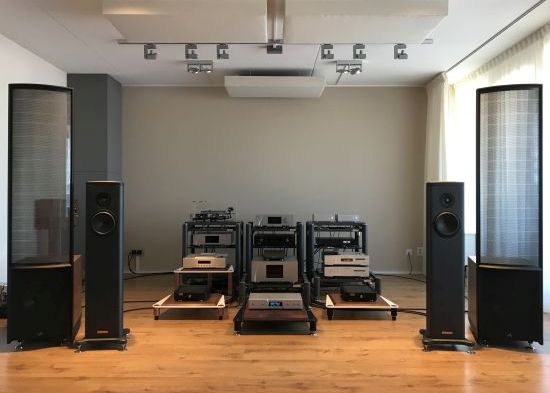
Review Context
The DSD-AR will be reviewed using the NuPrime ST-10 and CH Precision A1.5 power amplifiers, taking turns feeding the Magico S1 MkII loudspeakers. Sources include the Jay’s Audio CDT 2 MkII and Aqua La Diva CD transports and the Antipodes CX + EX music server combo. The DAC was used without a preamp, directly connected to the power amps via Siltech Paris cinch interlinks and CH Precision Balanced Link XLR interlinks. The speaker cables in both cases are the Driade Flow 405. All components, the DSD-AR included, are powered with Belden 19364 with Bals schuko and Oyaide C-004 IEC connectors.
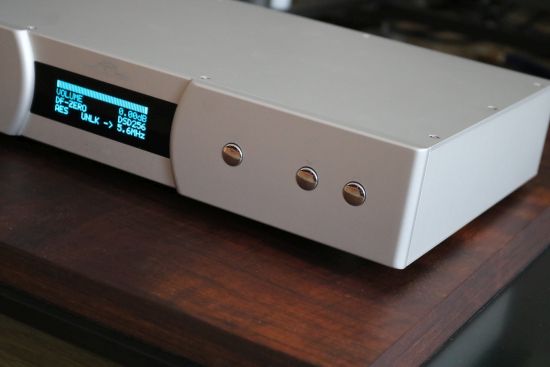
Listening – USB
After having allowed the DSD-AR DAC to come to terms with its new environment while sapping power for a couple of days, I went into my first listening session using the NuPrime ST-10 with CH Precision Balanced Link XLR cables and the Antipodes combo as a source via the Pink Faun USB cable expecting a lush and smooth sound. But here I was, pleasantly surprised to be treated to a lightning-fast, wide-open and super-detailed, super airy and super-transparent sound with great dynamics. The DSD-AR is actually a remarkably neutral and precise-sounding DAC and there was none of the feared overt richness or softness, no rounding or added warmth whatsoever, but at the same time, it was not at all clinical. In a way, it reminds me of Ayre’s first USB DAC that was also impressive for sounding so lucid, fluid and free. But the Ayre was certainly not perfect and the APL goes so much further.
The Pink Faun USB cable, as I learned during its review, sounds slightly romantic and has voluptuous bass but this is not audible via the APL DAC at all. I double-checked with the Final Touch Audio Callisto USB cable and although they can be distinguished from one another, indeed, with the APL, there is a remarkably small difference in sound between these normally very different cables. That can mean two things: either the DAC itself sounds extremely precise or the USB connection implementation is so good that it negates much of the audible influences from the cable. While the Callisto is the best match for my system with the CH Precision DAC, with the APL DAC, I’d opt for the Pink Faun for its slightly more solid bass and fuller lower midrange.
What you get with super-articulate DACs is that the transients are very precise which can lead to very agile, yet, comparatively thin, bass. That is, if you compare them to more sonorous sounding DACs. Being used to the sonorous-sounding C1, for the first few tracks, the DSD-AR comes across as sounding a little lean. But while it’s certainly more slender than the CH C1, the DSD-AR’s bass actually sounds in-line with the aforementioned two discrete R2R ladder-DACs. Meanwhile, its transparency, refinement, focus and resolution are also on par with the best I’ve heard, and that includes the Aqua and the Denafrips DACs.
Resolution and transparency are great and all but what about, if I may be excused to use the forbidden word, “musicality”? Fear not, it has that in spades! While resolving the heck out of everything you play with retina-like resolution and light-speed transients, the DSD-AR simultaneously has an almost subconscious easy-going aspect, a certain organic quality that makes for highly lyrical music-making and an immediate emotional involvement that makes one forget about all the technical details.
And the more music I played, the more it became clear that the DSD-AR DAC is not actually lean at all but incredibly neutral and transparent and just as capable of dazzlingly fast transients as of seductive and free-flowing fluidity. And that, my friends, is indeed something that vinyl, when done right, normally has a patent on.
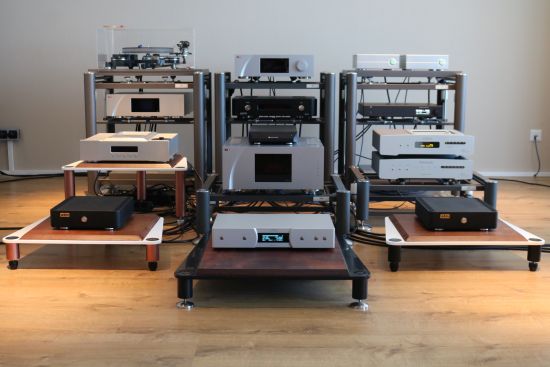
Listening – Coaxial Input
Pierre did tell me that the DSD-AR would sound best via USB and although it did indeed sound remarkably good that way, I needed to know just how they compare, and so, it was time to do some more comparisons. First up was the Jay’s Audio CDT2-MkII CD transport via SP/DIF. This CD transport has a characteristic fluid, organic and super-free-flowing sound and the DSD-AR simply allowed the transport to sound precisely as it is. There was no hardening up, no sobering or anything and this speaks volumes of its transparency. What was there was a deeper soundstage with more fleshed-out vocals and instruments.
I did have a feeling that it wasn’t only the CD transport that instilled the extra organic quality but that the coax input did indeed sound different from the USB input. Cross-comparing CD via coax with the server via USB, the latter was much tighter, more agile and more precise but also dimensionally flatter (which no doubt is a psycho-acoustic effect) and more controlled (which can cause the feeling of diminished depth), so long as one does not use a spacious or euphonic-sounding analog preamp, that is, of course. Here, the DSD-AR was feeding the CH amp and a pair of Magicos. It doesn’t get much cleaner than that!
However, how was I to know precisely how the DAC’s inputs differ if the CD transport sounds so different from the Music Server? The best CD transport that I have used is the Aqua La Diva. Alas, it has gone back but if ever a DAC warranted a comeback for the Aqua, this was it. And so I just had to try and borrow it again. Fortunately, Marco Oudheusden of Hexagon Audio was so kind as to bring it over once again.
With the La Diva CD transport back in action and connected via either AES/EBU or SP/DIF, again, the DSD-AR sounds fantastic. At first, the CD seemed indistinguishable from the USB input (using the FTA Callisto USB cable), but upon closer listen, the CD transport is still slightly sharper on the transients, a little quieter in-between, and a little more direct. But this is the closest I’ve heard the Antipodes come to the La Diva yet. If that seems like faint praise, please note that in all previous similar comparisons, the Aqua flat out beat the server in all aspects. That it comes so close now speaks very highly for the DAC’s USB input.
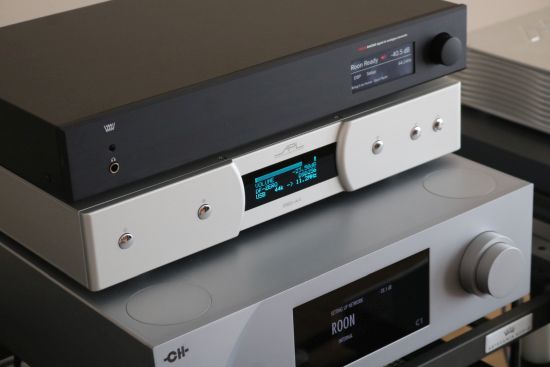
Simultaneously visiting for review is the Weiss DAC502 (review forthcoming). The Weiss is also a great DAC, but with a different perspective than the APL. When directly compared and functioning as a volume-controlled DAC and in the same environment, both DACs are very neutral, clean, transparent, and fast. Without going into too much detail, what essentially differentiates these DACs sonically is the APL’s free-flowing liquidity and ethereal airiness versus the Weiss’ more measured solidity and solid earthiness.
Settings
On the remote control, there is a button for DSD and a button for Filter. The former selects between DSD128 and DSD265 and the latter selects between the Normal (sharp roll-off), Slow (slow roll-off) and Zero (no oversampling) digital filters.
In what was effectively a blind comparison while toggling between DSD128 and DSD256 (I can’t read the display from the listening position:-) I turned out to have a mild preference for the lower setting as it offered slightly more solid bass while sounding just as refined otherwise.
As for the filters, I was unable to hear a meaningful difference between them. Normally, I can and do indeed normally have a preference, but maybe it is different with the DSD-AR due to the DSD upsampling.
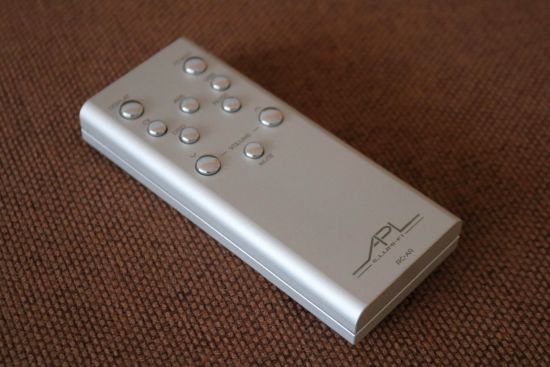
The remote control looks beautiful and offers a dedicated smoothly-curved button for each of the DAC’s functions. The housing is milled from two solid aluminum blocks and inside is a microprocessor taking very little power running custom firmware.
Interlinks
Changing to the DAC’s single-ended outputs using the Siltech Paris made for a slightly fuller, slightly more relaxed and less ultra-refined sound but still, let the DAC’s quality shine through, and even when slightly throttled, the level of detail remained stunning. I’ve not meticulously compared the DAC’s XLR and cinch outputs but during the listening that I did, I can’t say that I would favor one over the other. I’d say that the decision to use one or the other will come down more to the cable and the implementation on the receiving end.
Stability
As it happens, this DAC’s super-high performance level does come with a downside. As long as the cables remain connected, everything is fine. But a cable swap can make the DAC lose its lock on the signal, making it require a restart to start working again. This happens sometimes, understandably, with the USB input itself but sometimes also when connecting an SP/DIF cable and irrespective of how much care I take in grounding myself while doing the swapping. However, while not ideal for a reviewer, this should not pose a hurdle for regular users who simply connect it once and leave it be.
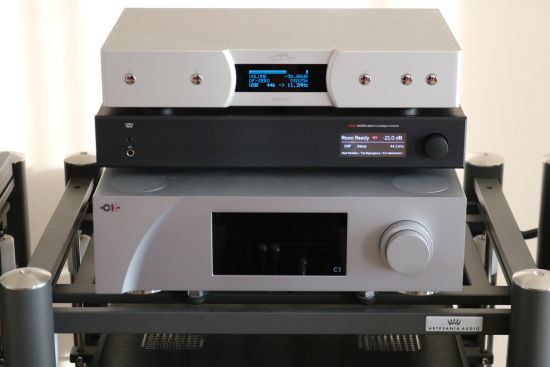
Placement
My initial listening was done with the unit on top of the CH C1 DAC which is on top of the Artesania Exoteryc rack. I found that this spot on top of the very solidly-built C1 works well for all the components that I tried so far and that goes for the DSD-AR, too. I just make sure not to put the top component’s feet on the C1’s aluminum end caps. This position brings out all of the DAC’s inherent fluidity, liquidity, and refinement but as I found, placement on the less floaty and more solid Artesania Modular Floor Platform helps add some substance to the DAC’s bass and lower midrange and adds a richer tonality to the midrange while retaining its overall performance minus a portion of its free-flowing fluidity.
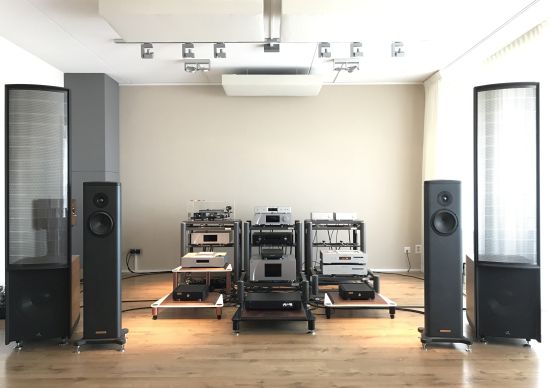
With the APL on the Modular Rack and the Weiss on the Exoteryc Rack, the two DACs can be brought to sound closer to one another but even under these circumstances, the Weiss remains drier, more measured and more earthy and the APL more fluid and ethereal. This shows that the DSD-AR DAC will work on a wide range of platforms yet is not impervious to tweaks.
Conclusion
The DSD-AR offers highly agile, wide-open, hyper-detailed, super airy and ultra-transparent sound with great dynamics. There is no overt richness or softness, no rounding or added warmth whatsoever, but at the same time, its delivery is not at all clinical. While resolving the heck out of everything you play with retina-like resolution and lightning-fast transients, the DSD-AR simultaneously has an almost subconscious easy-going aspect, a certain organic quality that makes for highly lyrical music-making and an immediate emotional involvement that makes one forget about all the technical details. At a more than reasonable cost, the DSD-AR is my new reference in the “still attainable” class.


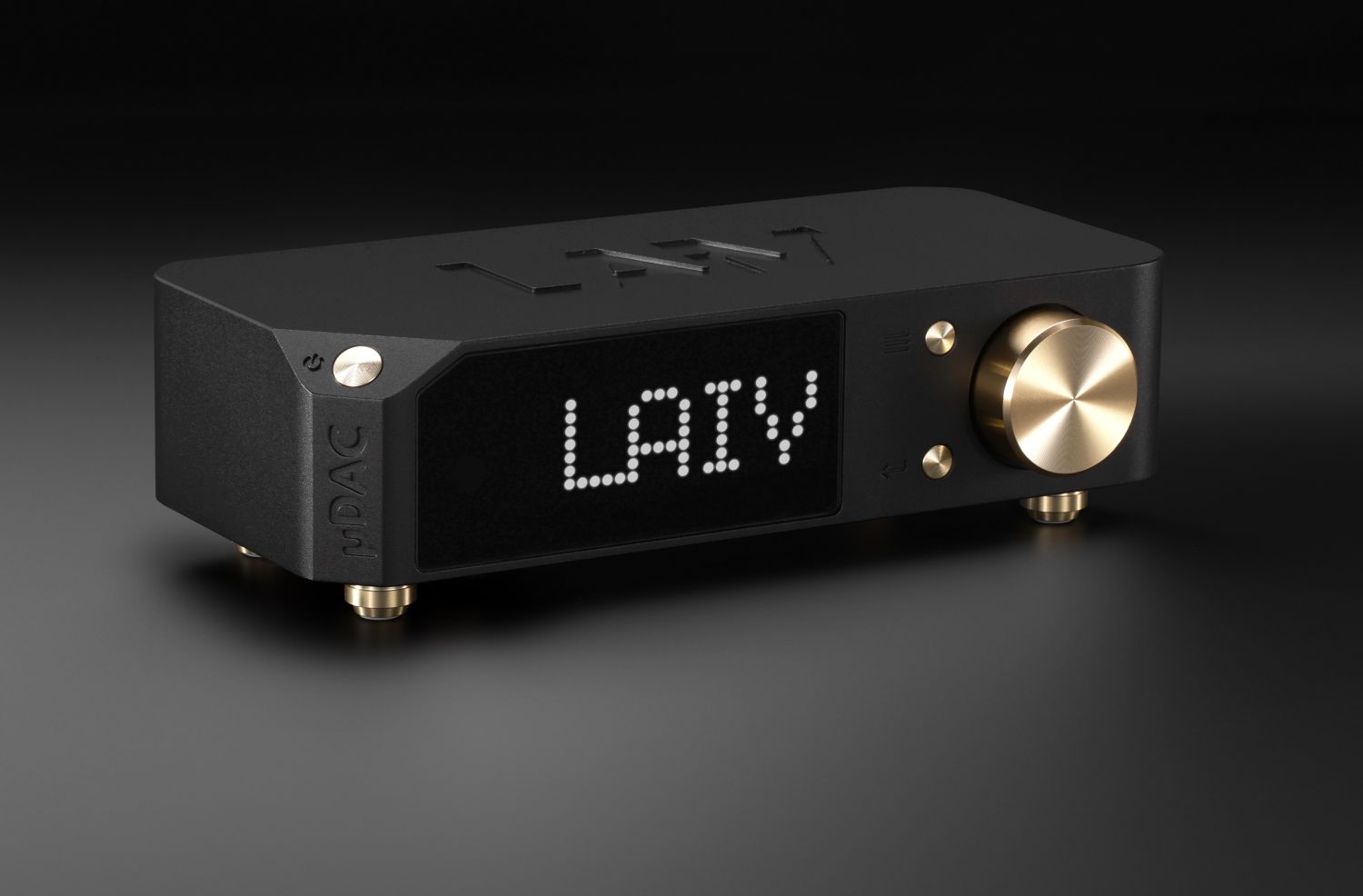






Glad to see another contender at a competitive price! Perhaps you’ll get the chance to review Rockna Wavelight as well! Cheaper than APL, also made in eastern Europe. 🙂
Perhaps I didn’t see it but what type of volume control this DAC have?
Cristian
Hi Cristian, indeed! Good question, I checked with Alex Peychev of APL and he informed me that the Volume control is built-in the D/A conversion devices. Further, he tells me that the DAC device manufacturer holds the only patent in the world for a non-decimating / lossless volume control while preserving the integrity of the DSD stream.
Which DAC device manufacturer?
The DAC chips are shielded with a piece of copper foil and as a result, the brand and type cannot be discovered.
Excellent review,
I would vote as well for reviewing the Rockna Wavelight DAC if possible in direct comparison to the APL.
Thanks
Matt
Thanks for the review.
In the end, did you prefer the USB or the coax input? It seems as it is mostly down to tastes.
My Aqua la scala mk2 seems to sound better with coax rather than USB. It might sound a little more free-flowing with coax.
Hi Rick, indeed, the choice between USB and coax/AES/EBU on a DAC is often a matter of taste. It also depends on the cable that is used and on the implementation on the source side. That said, all things being equal, my experience is also that coax typically sounds fuller and a little smoother than USB if also often a little less accurate.
What is often aimed for (and also what I have preached for the longest time) is to find the middle ground between accuracy and transparency on the one hand and an emotionally appealing delivery on the other hand. In that sense, again all things being equal, SPDIF could be preferred over USB. Lately, I am leaning more to the “neutral and accurate” side and no longer seek for a smooth or forgiving balance. If everything sounds “nice” then that filters out some of the variance that is in the recordings and truly excellent recordings will be curtailed to some extent. But this is an entirely personal decision.
In order to answer your question which of the APL’s inputs I prefer or which is better, I need to ramble on for a bit longer, I’m afraid.
Sometimes, DACs work internally with SPDIF and the USB input is a “bolted on” circuit that feeds into that SPDIF circuit. Other times, the DAC will be based around a USB chipset but with an SPDIF board “bolted on”. And of course there are methods inbetween. The APL’s USB input section, however, may well be the best implementation that I have encountered so far. There seems to be no editorialization with this input and in many ways that is the holy grail. When I am looking for accuracy and utter neutrality then this input ranks all the way at the top. The trouble is that my music server has no SP/DIF output and thus I cannot really compare the inputs properly.
The only thing I can mention is that a truly great CD transport does certain things that no server can do while retaining the typical music server strengths and it does this via SP/DIF and AES/EBU. That these inputs sound so superb says something about the CD format versus a computer source but it also says a lot about the Aqua La Diva in particular. When using less precise sources, the sound becomes smoother and more fluid (as well as less articulate and precise) and this is what also happens with the Jay’s. However, this is part of the Jay’s charm and not to be blamed on the APL’s inputs.
The plot further thickens… I have also encountered USB inputs that sound gray, lifeless and dynamically restrained on a DAC that had truly superb SP/DIF inputs. I can only guess as to what went wrong in those cases but my point is to raise awareness that variables exist on all ends and it is difficult to reach truly conclusive conclusions on USB versus SPDIF.
When you say that you prefer the coax input over the USB input with the Aqua DAC, I can certainly understand this and with several DACs, the Aqua too, I have felt the same way. The Aqua is very transparent and articulate and in some cases it can be beneficial to add some rounding and that is why the SP/DIF input can work better in a given system. However, this doesn’t really say anything about the particular DAC’s inputs unless one uses the same source that is known to sound very similar on all of its outputs.
Thanks for the informative answer.
As I’ve said before I’ve benefitted greatly from your reviews.
It has at several occasions guided me in my Hifi endeavors.
Fab – glad to have been of help:-)
Christian,
Another excellent review and just wanted to say I for one like when you cover the technical aspects of the gear you review. Certainly that info may be found elsewhere but it’s good to get it as I read the review and you write it very well.
Thanks,
Jon
Thanks Jon!
Hi Christiaan,
Fantastic review, it is impressive to dicover how a high end level DAC comes from a not known (to me) manufacturer! They aslo make amps and speakers….
Regarding the DAC could you please explain how is the soundstage, focus, etc.
Thanks in advance,
Alex
Hi Alex, the APL has impeccable focus, in line with the best I have heard. (I now also added this to the review). Its soundstage is slightly forward and very wide (if this is in the recording) with very accurate positioning of the elements in it. It doesn’t sound particularly deep but in that respect, it is very similar to other very accurate DACs (CH, Aqua, Weiss, etc). The last time that I heard very deep soundstaging from digital was with a Wadia 861 but more and more I wonder if that was actually accurate of a psycho-acoustic effect. For instance, some (digital) audio components can appear to sound very deep but then also tend to sound darker or less precise.
That was a very interesting review, thanks Christiaan. An Antipodes P2 could make for an interesting comparison of SPDIF/AES vs USB using the same EX/CX source. I use an EX with P2 AES output myself.
A comparison with the Ayon DACs you’ve reviewed would be interesting too.
Hi Richard, that is a good suggestion. Although I’d prefer a natively-implemented AES/SPDIF solution, the Antipodes USB conversion option does pose a useful addition. I’ll see if I can add a P2 to the setup to aid future comparisons. The Ayon Stealth has very different strengths and deviates too much to make good comparison material for this review. A comparison with the S10-II Signature, however, would have been interesting. Alas, that one has gone back to the dealer.
Hi Richard, Antipodes Audio is about to launch an entirely new range of products, based on the results of a 3 year project (OLADRA), focused on the impact of noise and bandwidth on digital audio. One of the new products is the S20 Reclocker with S/PDIF, AES/EBU and I2S outputs, that will replace the P2 you mentioned. I’m told that the new products will appear on the official website very soon.
The review was without detail. 1. It is unknown which chip was used on the device. 2- It is not specified which audio formats the device supports. Many more technical details are not specified. It’s been a very dark review
HFA reviews are all about sonic results. I only mention technical details if they are of special interest. The technical specs can be found on the manufacturer’s website.
Can Antipodes CX run HQPlayer and NAA and feed local files to this DAC via Ethernet or USB? Did you test that or only with CX/EX duo? You had a similar setup CX to CH C1 via Ethernet.
Any Antipodes server can run HQP and stream NAA via Roon. I think I didn’t start using HQP until after the APL review. Note that the C1 only accepts UPnP and Roon RAAT, not the HQP NAA streaming format.
Being in Europe, were you able to evaluate Holo May KTE DAC or compare to APL AR? Some reviewers say May sounds fluid and praise it a lot. On the other hand, and you pointed it as well, it could be some kind of trick masking resolution though still in an attractive way. One reviewer of APL AR said it reminds him of dCS, which in my mind means deep resolution that is not boring, a true high-end. The MSRP of Holo May is around $5k (non KTE i.e. no silver wires, is around $4k – this is probably the way to go with May) while APL AR is $8k I believe i.e. more than 50% more expensive than May KTE or twice the price of non-KTE version. I am just wondering whether it makes sense at all to go to sub 10k DACs like APL AR instead of sub 5k as in the former cuts must had been made (e.g. going from MR to AR) and they possibly piggyback on the glory of 3 times more expensive lineup while in the later we have the max possible within the set price. Goldensound praised Holo May a lot on YT. I understand APL AR chassis is very small, just like CX. The question is how much goodness could be placed in such small space and in comparison, for example, to Aqua Formula xHD rev2 with all those multiple separate boards within its big chassis.
Hi Mile, I asked but the local distributor is having difficulties with deliveries and understandably prefers delivering to customers instead of reviewers. I have only reviewed one Holo product so far: the Cyan and to me, overall, it sounded nothing like dCS, nor like Aqua, Audio-GD, APL, or MolaMola.
Regarding the chassis size or component count, in my book, that’s not at all related to the SQ. It’s the circuit and the component selection that counts. Of course, Aqua uses a discrete R2R solution that requires very high precision power supplies and regulation whereas the APL uses a chip converter with much of the circuit built-in.
If you were to buy a used DAC between the two options you are familiar with and at price at around 60% of the msrp, e.g. Aqua Formula xHD rev2 at $8k or APL DSD-AR at $4k, what would you opt for? You listened to both so you pretty much know bang for the buck of each. Hypothetically, your source is CX/EX and you intend to mostly serve files from CX to DAC or CX to EX to DAC, possibly using HQP
Hi Mile, sorry, this one slipped under the radar. Tough question and I’m not sure. I guess it depends on what aspects are valued most. First off, at 6000 euro, the APL DSD-AR is one of the very best DACs I have heard. At around that price point, the Denafrips Terminator Plus is another but that unit does not have volume control and sounds quite different too. It has a more strict and analytical delivery versus the APL’s more organic, free-flowing nature. The Formula xHD has a large portion (not all) of the APL’s fluidity and refinement and is comparably transparent as both other DACs but more solid and grounded in the bass than the APL and less analytical than the Denafrips. Only you can decide which DAC poses the best solution.
Hello,
Just like the question above, I am looking at the APL DSD SR MK2, not the AR and the Aqua Formula you mentioned above. Can you compare please? I have a Bricasti M1seMDx.
I have not listened to the APL DSD SR, so I really can’t comment on this from any place of certainty. I would suspect that the APL sounds more “golden” and more free-flowing and perhaps more light-footed than the Bricasti which might have a more earthy delivery with more grounded bass, but that really is just a guess, nothing more.
Hello ,
i have a lot of pcm files (wav, flac , ape ) , whixh sounds thrue computer good. Is it possible , that with Apl ar 128 dsd conversion some files may sound worse than pcm ?
What is the volume setting , if i use ss amplifier ?
My friend has Rockna wavedream dac and i have heard better sound thrue i2s imput as on usb input.
Why do you think APL doesnt use i2s imput as well ? USB is not the best way for hi end audio.
WAV is essentially the same as PCM and they should sound very much the same. I can’t really comment on FLAC or APE. But I would think that any perceived sonic difference depends more on the input receiver than on the DSD conversion process.
USB quality is highly dependent on the quality of the implementation of the interfaces on both ends. It can sound great and not so great. AES/EBU and S/PDIF are much more predicatable. I2S has great potential but does not have a defined connection standard and is relatively little used which means that many manufacturers choose to not add it. Also, it is originally intended for very short (internal) connections.
Hello ,
i am thinkig to buy APL dsd ar dac. Is it realy so good ( among competitors ) that is worth to spend 7000 $ for it ?
Which is the optimal USB cable for APL dsd ar ?
This is a question only you can answer. There are now a number of good DACs around this price point but they are all placed on different positions on the sonic landscape. The choice will basically be between tighter and more analytical or fuller and smoother. The APL sits more or less in the middle in terms of the level of detail and neutrality but is considerably more liquid than average. If you are after this particular combination of smoothness, finesse, and transparency, then I still consider the APL one of the top contenders.
When choosing the “ideal” USB cable, it depends on the implementation of the interface for both the source and receiving end. As such, and also because personal taste comes into play, there is no such thing as the ideal USB cable. Just start somewhere and see what you find missing or excessive, then find a cable that works synergistically.
Hello ,
i know that Apl hifi dsd-ar dac has Cirrus logic chip. But what does it mean – is it delta sigma dac or some kind of fpga dac ?
I can’t find confirmation on the DAC used. I do see a Xilinx Spartan chip inside which is an FPGA but I think it’s employed for other uses than DA conversion. I also see two identical IC’s that could be the DAC chips but they have copper shielding. If these are the Cirrus Logic IC’s that you mention, then that would mean that the conversion type is likely indeed Delta Sigma.
Hello Christiaan ,
do you perhaps know – is it Ideon audio Ion dac better sounding as APL DSD AR dac ?
Best regards ,
Igor
I’ve not heard the Ideon DACs just yet so I really cannot comment.
Hi Igor,
I happened to have experience with both manufacturers: I did have the Ideon Ion DAC and APL DSD-MR SE in my room for comparison. Both driven by the Ideon Absolute Stream + Absolute Time. For me this was a day-and-night difference, especially in terms of engagement (in favour of the APL). The Ion sounds like a terrific audiophile DAC checking all the boxes. The APL has it all, but wins in pure timbre life-like reproduction. I ended up with the full stack of APL (switch, network player and DSD-MR SE DAC) and my quest for the digital frontend is over. No interest in reading reviews and trial listening sessions.
Of course the DSD-AR is a different model but I assume the house sound (iieek, I hate the word) is similar.
Hi ,
OK , APL DSD MR is exelent dac , which is hard to beat. But for 40000 € ??
Many people rather buy in the same quality range for more realistic price of 25 000 €. Playback designs mpd-8.